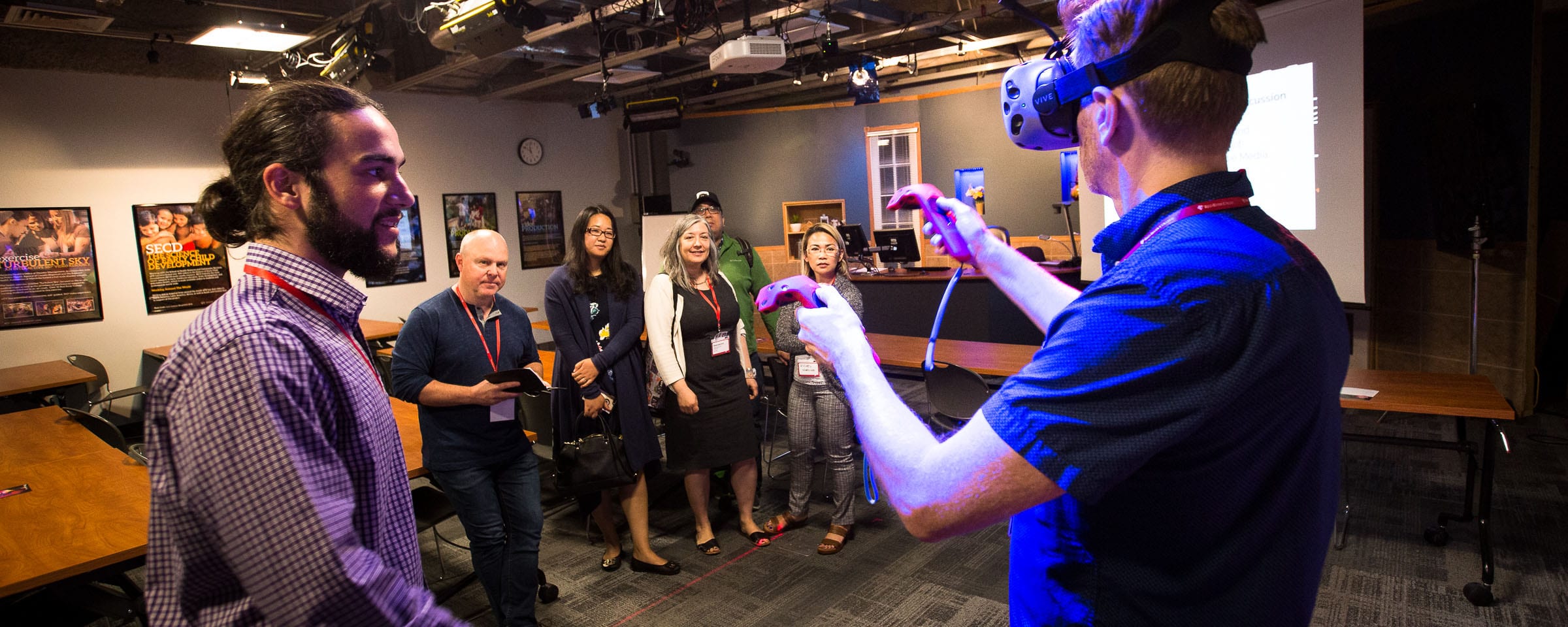Accessible Video and Audio
Making accessible video and audio
Captions, Transcripts and Descriptions
Web Content Accessibility Guidelines (WCAG) 2.0 identifies the need for recorded video and audio to have a text transcript and captioning (Success Criteria 1.2.1, 1.2.2 and 1.2.3). Video and audio should also include descriptions (Success Criteria 1.2.5).
Captions
Captions are text versions of the audio that appear on screen in synch with the spoken word in video and animation. Captions should be used in video but are not required for audio. Captions can either be closed or open. Closed captions (CC) can be turned off, where as, open captions are always visible. Captions are required for people who cannot hear the content. They also aid in greater understanding of the content for people who may not be fluent in the language and for those who prefer to read captioned text.
Who depends on captions?
- People who are deaf and cannot hear the audio.
- People who are hard of hearing and cannot hear some of the content.
- People with cognitive and learning disabilities who need to see and hear the content to better understand it.
Example
This video, Introduction to Disability and Accessibility, provides captioning.
Transcripts
Transcripts are text documents based on the audio content embedded in video, audio, animation and interactives. Text transcripts do not have to transcribe the audio exactly and should include descriptions of important visual details. Transcripts are required for people who use screen readers who prefer to scan and read at a pace faster than the spoken word and benefit anyone who prefers to have readable and searchable text.
Who depends on transcripts?
- People who are deaf and cannot hear the audio.
- People who are hard of hearing and cannot hear some of the content.
- People who are blind who access text content on a refreshable (dynamic) Braille display, which converts text into Braille.
- People who are DeafBlind, who cannot hear or see, who access text content on a refreshable (dynamic) Braille display, which converts text into Braille.
- People with cognitive and learning disabilities who need to see and hear the content to better understand it.
Examples
- The Introduction to Disability and Accessibility video, as in the example above, but with captioning and a transcript on YouTube.
- This video titled Empathy hosted in Microsoft video player includes customizable captions and a downloadable transcript.
Descriptions
Descriptions are often referred to as audio descriptions or described audio, and less commonly as video description. Descriptions can be included as an audio track or within the text transcript. Descriptions describes all necessary visual details in a video, such as who is on screen, where they are, what they are doing, their facial expressions, and any writing that is on the screen.
Who depends on descriptions?
- People who are blind or have low vision and cannot see the video.
Examples
The Introduction to Disability and Accessibility video in the above examples, but with described audio.
The Empathy video with audio description on YouTube.
Generating Captions and Transcripts using YouTube
YouTube does an excellent job at providing auto-generated captions but they may require some manual editing to clean up the text. YouTube’s captioning file is used as a transcript. You can also download the captioning file to edit and build your own text transcript.
If YouTube is not your preferred hosting platform, you can still use it to generate captions and a transcript.
Steps:
- Upload a video YouTube to build the captions
- Download the captioning file
- Edit the captioning file for any errors
- Upload the captioning file to your video on another platform
- Include the text from the captioning file as a text transcription
Caption builders
If you prefer to use a dedicated caption builder, these services are recommended by Queens University, Penn State, University of Washington and W3C (World Wide Web Consortium).
- Amara a free, nonprofit service
- MovieCaptioner is available for Mac and Windows a fee
- MAGpie is a free captioning and audio description authoring tool
- Subtitle Horse is a free online service
- DotSub.com is a free online service
Further reading
Use automatic captioning in YouTube
An introduction to Captions, Transcripts, and Audio Descriptions by WebAIM (note: audio description is also referred to as video description or descriptive video)
BBC’s Online Subtitling Editorial Guidelines V1.1 (Note: captioning is referred to as subtitling in the UK)
How to Make Audio Descriptions by DigitalGov, U.S. General Services Administration
8 Benefits of Transcribing & Captioning Videos by 3PlayMedia
